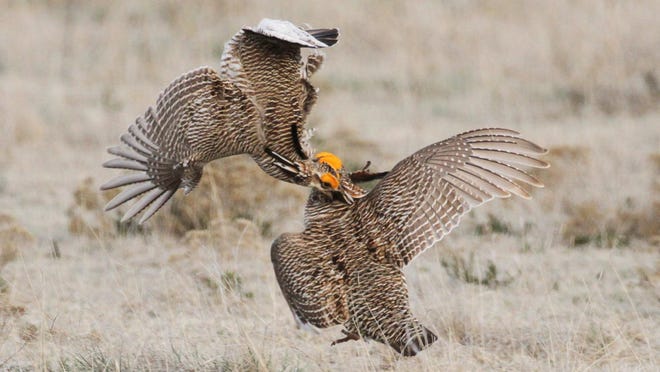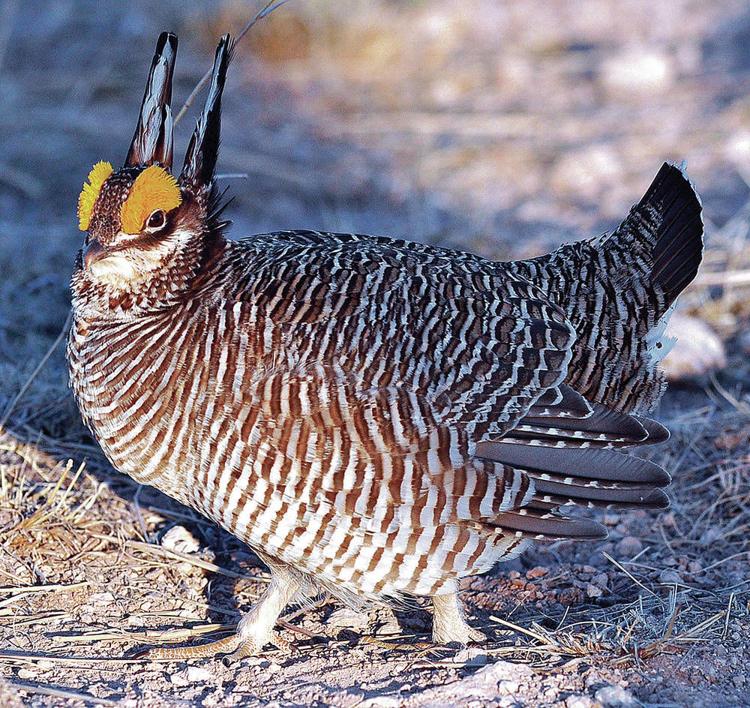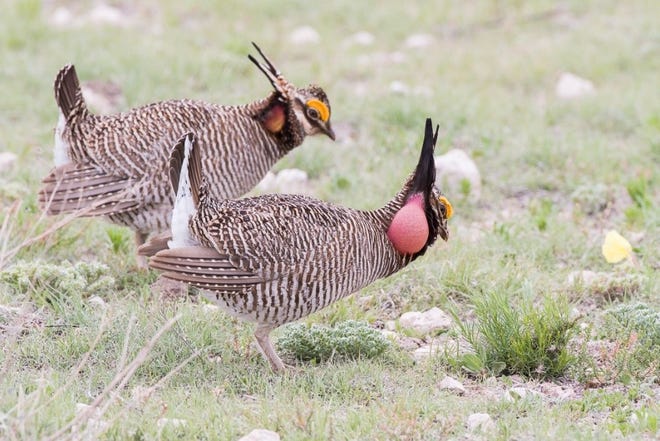Published by: Kevin Wilson The Eastern New Mexico News
April 10th, 2021
https://www.easternnewmexiconews.com/story/2021/04/11/news/a-bird-in-the-bush/168393.html
MILNESAND – A morning on the stomping grounds of the lesser prairie chicken gives plenty of insight into why the bird’s population has dwindled over the decades.
It requires a very specific type of land to mate, it’s an easy target for predators and the eggs that do get laid have about a dice roll’s chance of making it to adulthood.
But a morning watching the birds in action show why so many in the most rural of rural eastern New Mexico want to keep them alive.
A group of conservationists, along with Pep rancher Mack Kizer, invited various media outlets to a viewing of the birds Thursday near Milnesand.
Wayne Walker of Oklahoma City-based LPC Conservation said the group anticipates a plan will become public from U.S. Fish and Wildlife Services this week that is focused on the species.
“It’s a plan that’s comprehensive in nature,” Walker said. “The difference between this plan and some of the other plans that have been in New Mexico is we pay people like Mack to negotiate a market-base rate to get his ranch protected to benefit lesser prairie chickens in perpetuity. It’s a big sacrifice for him and his family. It’s more than a government payment program.”
The goal is with a designated portion of land like Kizer’s serving as a conservation bank for the lesser prairie chicken, surrounding acreage that is prime real estate for renewable energy development has fewer legal hurdles to clear.
Adam Riggsbee of Austin-based RiverBank Conservation thinks of a conservation bank as a three-legged stool – a conservation easement, a management plan and an endowment to fund the plan. While the first and last legs are usually uniform, the management plan is tailored for each situation.
A plan for lesser prairie chickens, Riggsbee surmised, could include grazing limitations and elimination of tall structures that would be perfect hunting spots for predators.
“They need intact prairie, and they need the absence of really tall structures,” Riggsbee said. “Any sort of fragmentation can displace them. You want to look for a prairie that doesn’t have a whole lot of roads, doesn’t have oil pads, doesn’t have power lines. Just native prairie.”
Kizer would see some financial incentive from the endowment, but likely less than he could make developing the land for alfalfa and other crops. But he’s grown up around the birds, and doesn’t mind the sacrifice.
“I’m always trying to protect the chickens,” Kizer said. “I think they’re one of the neatest birds there ever was.”
The Thursday morning mating ritual was described by grouse biologist Tish McDaniel, who first saw the birds when her parents took her out to a lek (mating site) as an infant.
“The sole purpose of the dance is to call the females,” McDaniel said. “They start a little bit before the light, and they’ll go to about 8:15. They stomp their feet, they flap their wings and spread their tails and their (air) sacs.
“They stomp, they flutter, they jump and down. They try to get the highest they can on the lek. The one who can stand the tallest thinks they’re going to get a female there.”
Copulation happens in a matter of seconds, and a female will have multiple partners over a 13-day period. She’ll lay an egg each day, but won’t sit on the eggs until she develops a brood patch. The eggs all hatch around the same time, and come out of their shells fully feathered and ready to hunt insect food sources on their own.
McDaniel said she’s taken thousands of people on these visits, and it’s not unusual to see people get emotional after watching the birds as they simply try to keep their existence intact.
“I think it’s important to save every species,” McDaniel said. “We never know what the importance of a species is, from the maggots that take care of the dead stuff. What link do they give to the other species in the world? The thing about the lesser prairie chicken is it’s so charismatic. All of our grassland birds are in decline. I’d hate to ever say there was a species that’s not worth saving.




